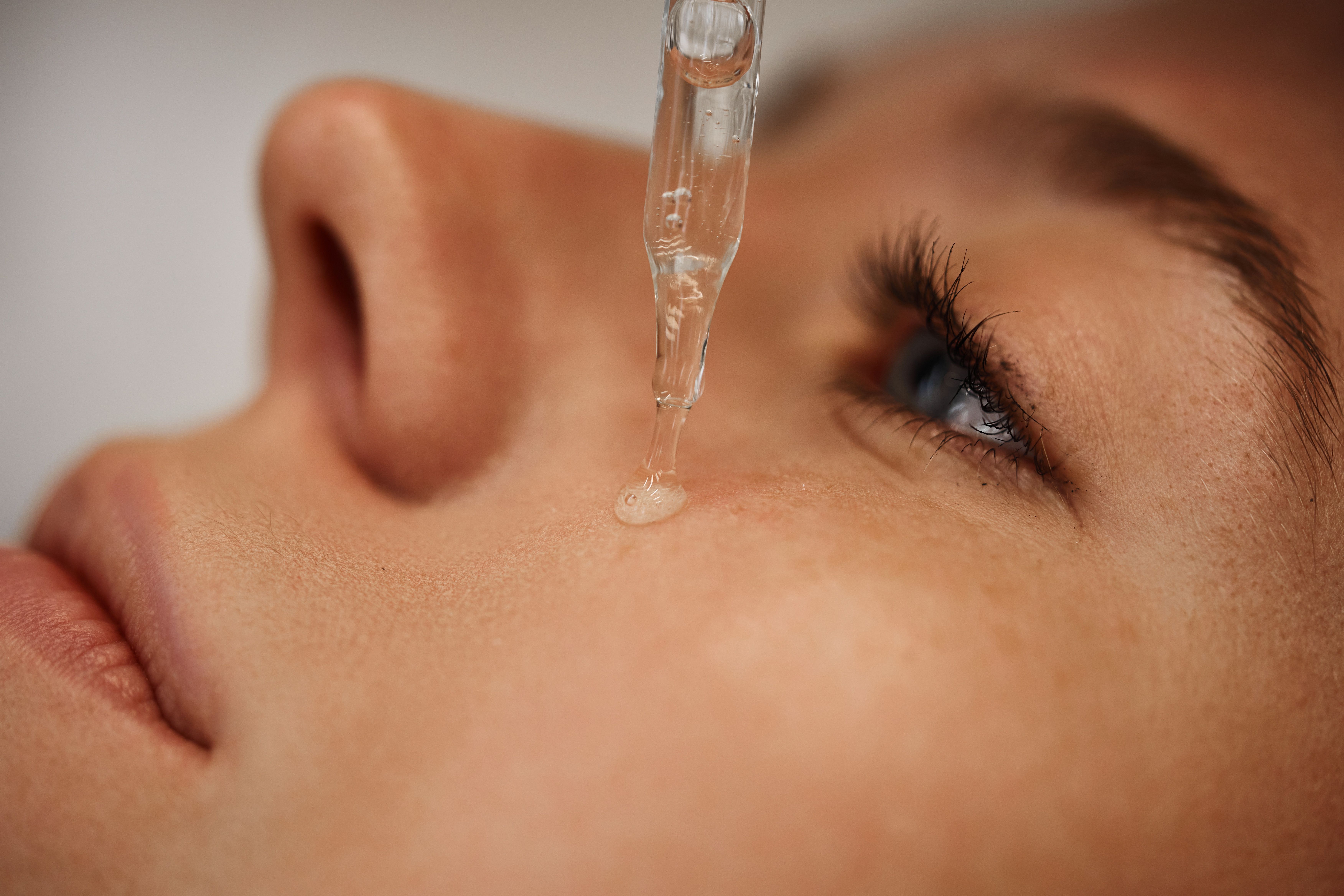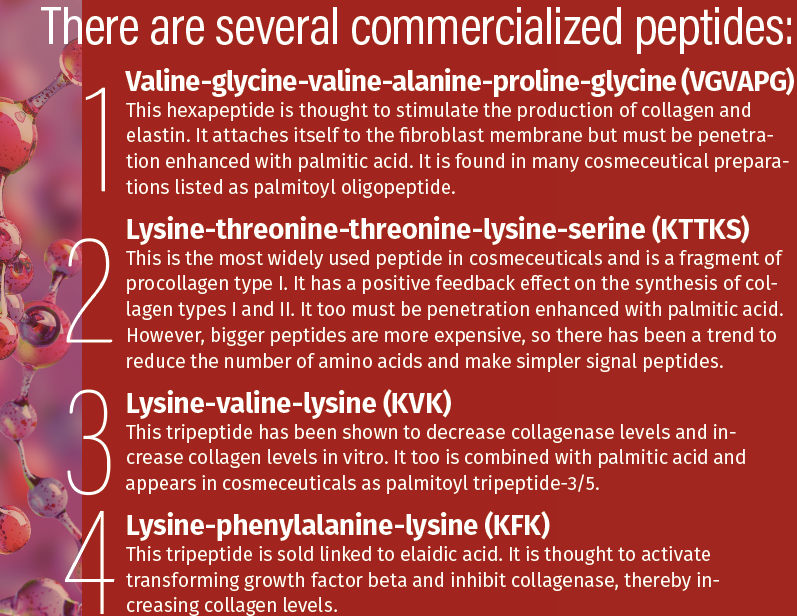- Case-Based Roundtable
- General Dermatology
- Eczema
- Chronic Hand Eczema
- Alopecia
- Aesthetics
- Vitiligo
- COVID-19
- Actinic Keratosis
- Precision Medicine and Biologics
- Rare Disease
- Wound Care
- Rosacea
- Psoriasis
- Psoriatic Arthritis
- Atopic Dermatitis
- Melasma
- NP and PA
- Skin Cancer
- Hidradenitis Suppurativa
- Drug Watch
- Pigmentary Disorders
- Acne
- Pediatric Dermatology
- Practice Management
- Prurigo Nodularis
- Buy-and-Bill
Publication
Article
Dermatology Times
Understanding the Role of Amino Acids and Proteins in Skin Care
Author(s):
In this month's Cosmetic Conundrums column, Zoe Diana Draelos, MD, describes peptides and their use in skin care.
Using amino acids, peptides, and proteins in skin care products is not new. One of the earliest humectant moisturizer ingredients that functioned like a sponge to hold water on the skin surface was hydrolyzed collagen. The collagen was obtained by cooking cowhides and retrieving the collagen fragment–rich broth for addition to moisturizers. Collagen is made up of around 4000 amino acids, but the fragments created by heating cowskin are erratic, unpredictable, and undefined. New synthetic chemistry allowed the creation of peptide fragments one link at a time from specific amino acids that could be biologically active through receptor-mediated activity. This manufacturing method is tedious and expensive but highly reproducible, allowing the creation of well-defined peptides. Recently, the cost of peptides has dropped, allowing this ingredient to leave the prestige cosmetic market and enter the mass cosmetic market, which is why there are now a plethora of skin care products utilizing this technology.
The Mechanism of Peptides
Peptides work on the lock-and-key model of receptor-mediated activity. The peptide is a fragment of a larger molecule, such as type I collagen, which is presented to the cell membrane and recognized by a specific receptor molecule. This in turn initiates some type of biologic response through a conformational change in the transmembrane structure, leading to a cascading of events in the cell’s interior biochemistry. This cascade leads to amplification of the signal sent by the peptide, which is used in cosmetic formulations in parts per million based on cost.
Peptides need to reach the viable layers of the skin to work. The skin is very adept at keeping out proteins, which are the basis for most allergenic substances, such as peanuts and shellfish. Depending on the size of the peptide, penetration may also be limited. The penetration of short peptides is enhanced through palmitoylation, which involves the addition of a free fatty acid, such as palmitic acid, to the peptide.
callisto/AdobeStock

Types of Peptides Available
There are 3 families of peptides: signal peptides, carrier peptides, and neurotransmitter-inhibiting peptides. Signal peptides are intended to act as messengers triggering the synthesis of collagen by fibroblasts. Many of these data come from wound healing studies. Carrier peptides are used to deliver ingredients into the skin, but only the peptide delivering copper has been commercialized. Neurotransmitter-inhibiting peptides are thought to inhibit acetylcholine release at the neuromuscular junction.
Most Common in the Marketplace
The most widely used peptides are the signal peptides, which form the basis for antiaging claims in many moisturizer formulations.
Neurotransmitter Peptides
The neurotransmitter peptides were developed to mimic the effect of neurotoxins. The most popular neurotransmitter peptide is acetyl-glutamyl-glutamyl-methoxil-glytaminyl-arginyl-arginylamide (Argireline), which is said to interfere with the release of acetylcholine by destabilizing the protein complex. Pentapeptide-3 is another amino acid sequence, but the sequence is unknown. This peptide is said to act like curare at the postsynaptic membrane. Achieving neurotoxin effects with topical agents is challenging as the peptide must deeply penetrate the skin, reach the receptor, and remain in place long enough to produce a physiologic effect.
Zoe Diana Draelos, MD, is a consulting professor of dermatology at Duke University School of Medicine in Durham, North Carolina, and editor in chief of Dermatology Times.







